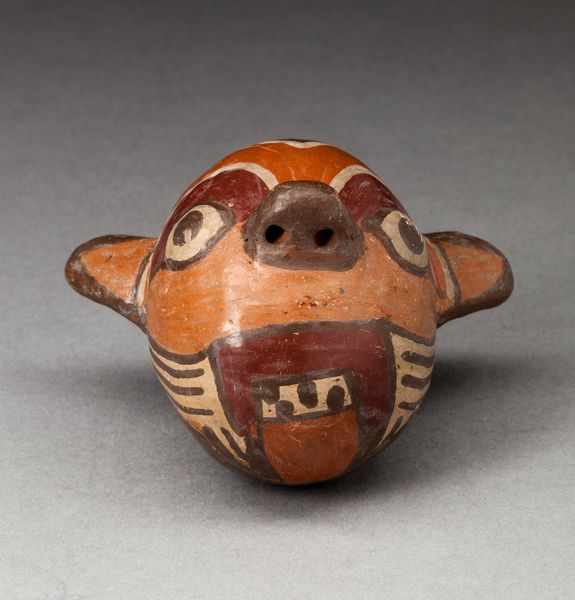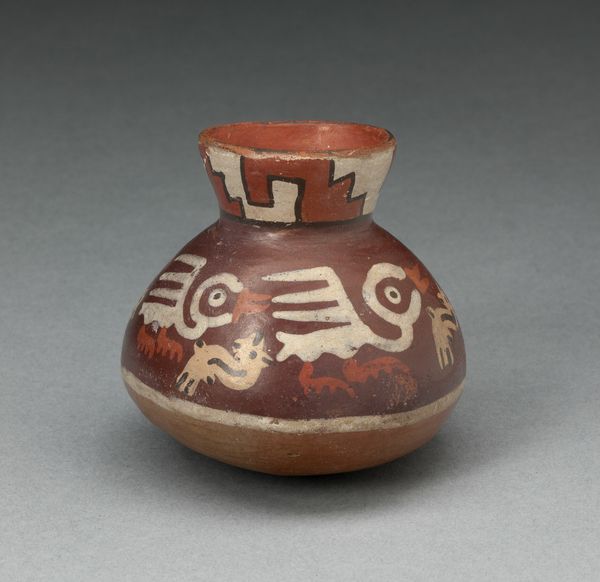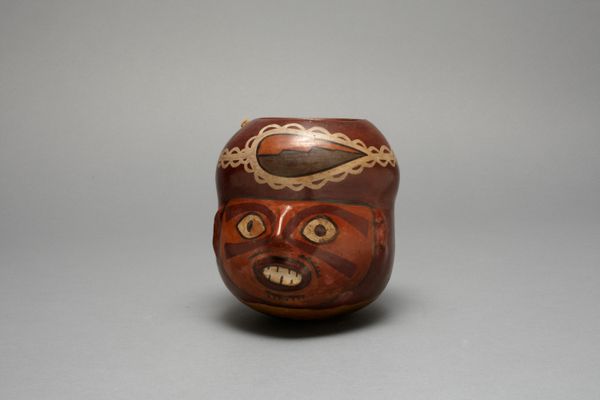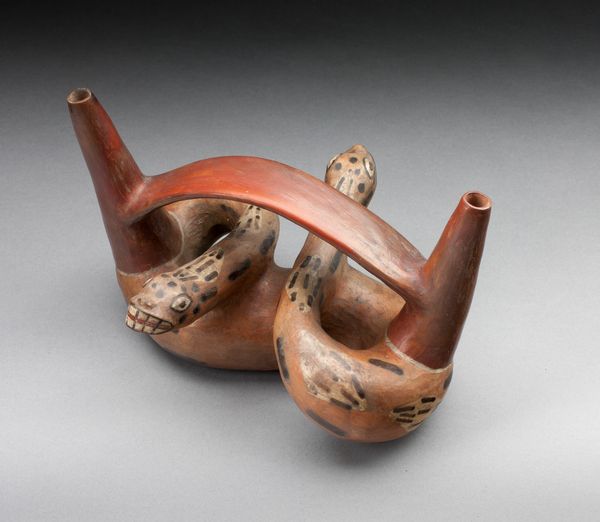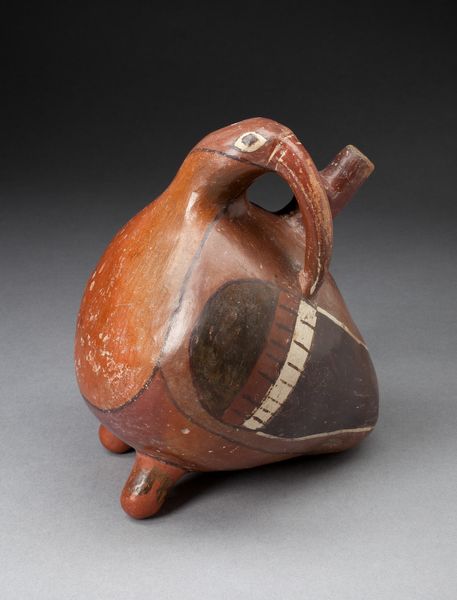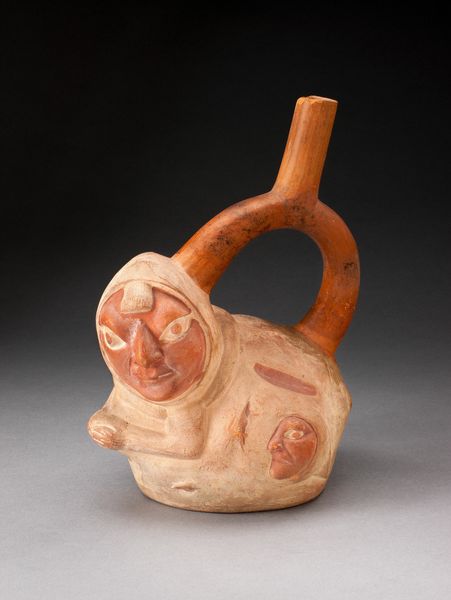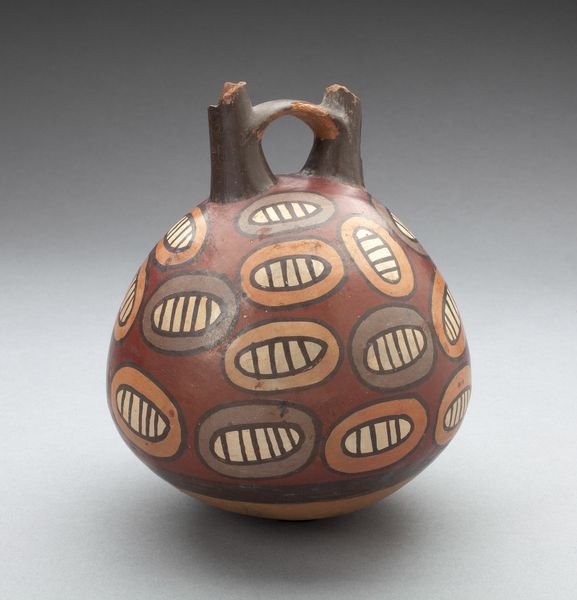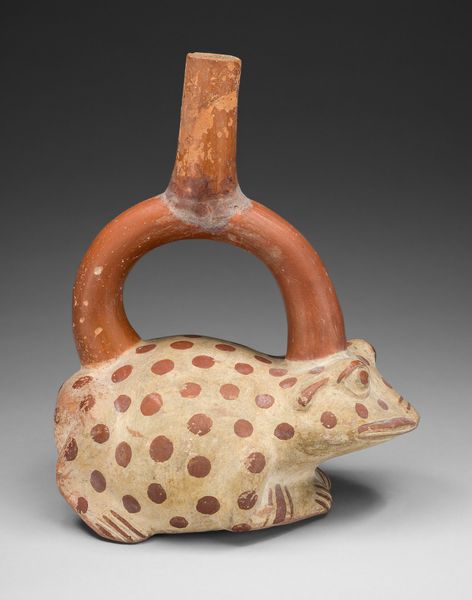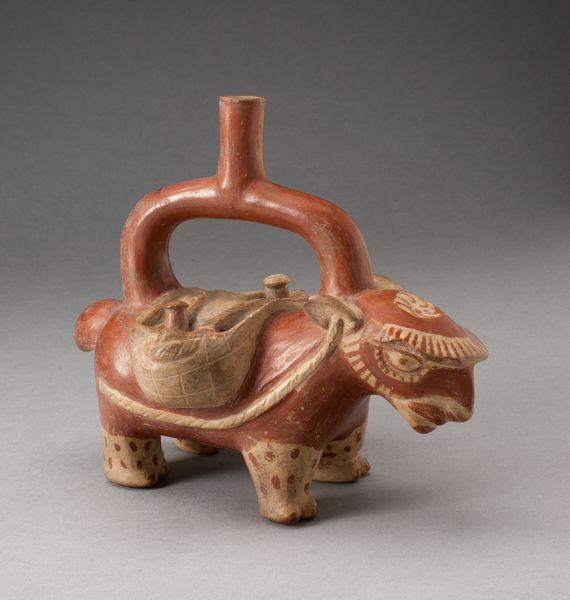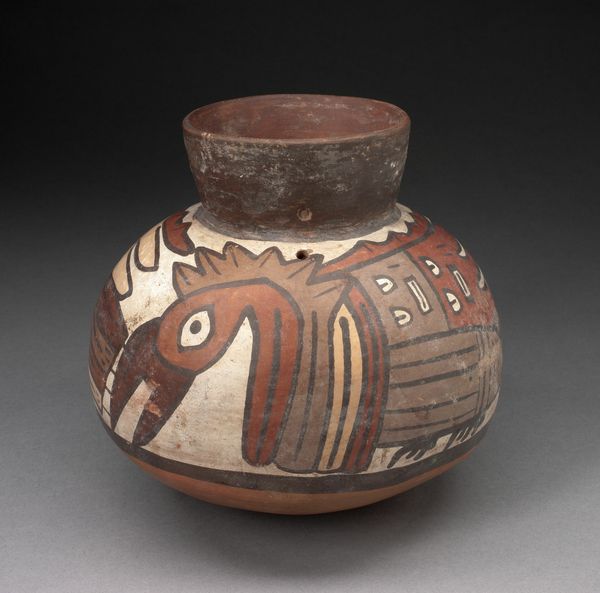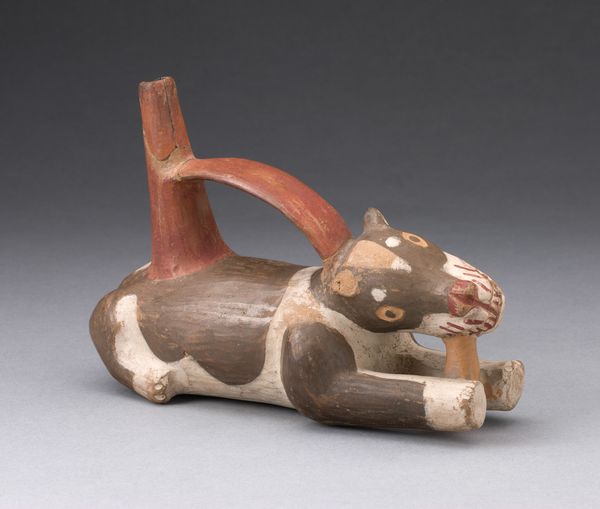
Vessel in the Form of a Serpent Wearing a Feline Mask Covered with Abstract Motifs c. 180 - 500
0:00
0:00
ceramic
#
ceramic
#
figuration
#
geometric
#
indigenous-americas
Dimensions: 9.2 × 16.8 cm (3 5/8 × 6 5/8 in.)
Copyright: Public Domain
Curator: Let’s examine this striking ceramic artwork from the Nazca culture, dating roughly from 180 to 500 AD. It's a vessel shaped like a serpent, but with a feline mask adorned with abstract motifs. Editor: My initial impression is one of restrained power. The muted colors – mainly browns, reds, and whites – and the sinuous form give it a very grounded, earthy feel. It feels ritualistic. Curator: Indeed. Nazca ceramics, particularly vessels, served vital ritualistic and functional purposes, closely interwoven with their agricultural society. The presence of both serpent and feline imagery is fascinating, as they each represent considerable power within the Nazca cosmology. Editor: Absolutely. Serpents, across so many cultures, symbolize transformation and connection to the earth. The feline, with its predatory strength, speaks to a different kind of dominance, perhaps linked to ruling elites or shamanistic power. Combining them seems incredibly potent, doesn't it? Curator: Precisely! Furthermore, consider the social context. The control over ceramic production and distribution could indicate social stratification. The images depicted – their style and complexity – also played a key role in shaping the Nazca belief system. How beliefs were reinforced or possibly contested. Editor: And those abstract motifs— they intrigue me the most. We’re tempted to decode them, to look for direct symbolic links, but I think their very abstraction is powerful. It suggests knowledge, accessible only to a select few initiated into Nazca society. Did only those within the circle know? Curator: Exactly, such imagery would contribute to cultural cohesion, asserting authority. And let’s not forget the practical use of these vessels: as containers for offerings, libations, or even pigments, depending on their size and form. How these pieces functioned would often determine where and who would see it. Editor: I keep coming back to the form – that doubled spout. Was it primarily symbolic, or did it serve a particular ritual function? It invites speculation. The connection is just profound! Curator: Agreed. While it is often hard to know their complete functions, engaging with such artistry of this Nazca vessel reminds us of art's place within the culture of ancient societies. Editor: And that’s the vital dialogue: recognizing these objects not as isolated artworks, but as echoes of a complex society wrestling with its world, power structures, and beliefs. What stories could be told?
Comments
No comments
Be the first to comment and join the conversation on the ultimate creative platform.
